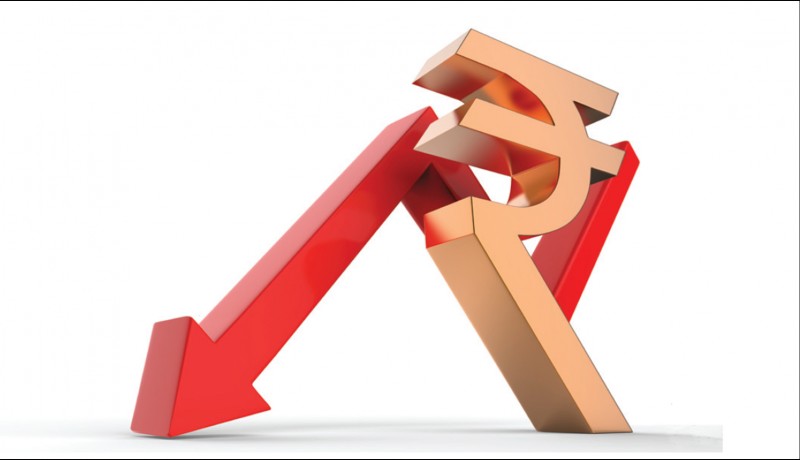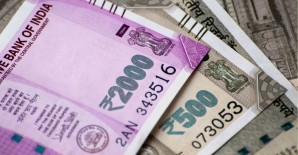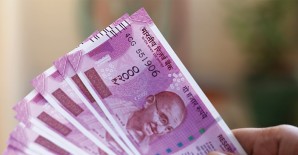
Money

Silvers are not insulated from the falling value of the rupee, writes economist Priya Desai
Old dilapidated buildings collapse, footbridges collapse, but why is the rupee’s exchange rate following suit?” asked an old-timer from our rummy group with mischief in his eyes. I could discern the source of this humour-garnished query as he was looking at the front page of a newspaper with the image of a rupee note under a red hammer. This comment set the economist in me wondering whether the downslide of the rupee should be a source of concern for silvers.
Currently, not a single day passes without financial news peppered with expressions such as ‘currency turmoil’, ‘rupee on a roller coaster’, etc, with reference to the falling exchange rate of our national currency. In an uncertain domestic and global environment, every piece of negative news in the world of finance and international trade contributes to a downward shift in the external value of the rupee.
What impact do these changes have on our day-to-day lives? To find an answer, it’s important to understand what causes fluctuation in the exchange rate of the rupee.
Exchange rate decoded
The exchange rate of the rupee is its price in terms of the currency of another country. This price is generally expressed in terms of the US dollar, as it is the most widely used and accepted international currency.
The rupee-dollar exchange rate indicates the number of rupees against one unit of the dollar. This is also referred to as the direct quote of the rupee exchange rate. But a rupee exchange rate against other currencies like the euro, Japanese yen, and many other currencies is also available.
The Indian rupee’s exchange rate is market-determined (floating exchange rate); it fluctuates in tandem with demand and supply. Till 1991, this rate was pegged to the US dollar and was fixed. Different countries follow different methods of fixing the exchange rate. An example of a pegged or fixed rate is the Saudi Arabian riyal rate against the US dollar.
In India, the Reserve Bank of India publishes on a daily and monthly basis the rupee exchange rate against major currencies such as the US dollar, euro and Japanese yen. These are also known as spot exchange rates. The given table shows how the value of the rupee has slid against the US dollar over the past three years, and more rapidly in recent times. In the current year itself, the rupee depreciated by 16 per cent.
The minute-to-minute and daily fluctuations in the exchange rate are crucial for foreign exchange markets where currencies are traded on a continuous basis. The players involved are banks, financial institutions, currency traders, exporters, importers, money transferers, etc.
Factors that cause volatility
There has been a significant increase in the volatility of the rupee exchange rate in recent months, eliciting positive and negative reactions from various sections. There is a range of factors at play that has contributed to the rapid depreciation of the rupee.
Although the RBI and other government sources have been maintaining an eagle’s eye on the situation, they have also adopted an arm’s-length policy in dealing with the matter. This is evident in their reluctance to intervene and stem the slide, leaving the situation in the hands of market forces. Some important factors that explain the volatility in the rupee exchange rate are as follows:
- Global markets have turned volatile, sending similar waves to emerging markets such as India. The trade war between the US and China has increased the threat of protectionism across the world, creating barriers to increased exports from countries such as India.
- As the US economy picks up and pushes up interest rates, hot money flows are reversing their direction from emerging markets such as India to the US. This creates pressures on the demand for dollars and a slide in the external value of the rupee.
- Crude oil prices continue to be at an all-time high and are constantly moving upward, disrupting the financial budgeting of oil-dependent countries such as India. Crude oil imports contribute 80 per cent to the oil requirement of our country. Rising oil prices have increased oil import bills, worsening the current account deficit.
- The big mess in the banking sector has exacerbated the situation and made it harder to contain the falling exchange rate. The IL&FS debacle has only worsened the banking scenario.
- None of the above factors seem to be in retreat mode, with new challenges to the stability of exchange rates not being ruled out. It would appear that the Government is underplaying the role of this volatility by emphasising the strong macro fundamentals of the Indian economy. Optimistic growth projections from the IMF are aimed at positioning India as the world’s fastest growing economy.
It is also contended that many other currencies have depreciated far more than the rupee, alluding to currency depreciation as a global phenomenon. But that doesn’t lessen shocks to the Indian economy in any way.
The impact
The common man is oblivious to the complexities of exchange rate mechanisms. However, people start scrutinising how the falling rupee exchange rate impacts their day-to-day life when:
- They pay more for petrol and diesel: Transport operators quietly transfer higher fuel prices to consumers by increasing the prices of goods and services. Parents start paying more for school bus services. Imported items such as mobile phones, computers, refrigerators and other goods become pricier. In short, a weakening rupee results in various inflationary pressures.
- Loans get costlier: Most people who have raised loans from banks for cars, homes, education, etc, will have to rework their financial planning for the year. This is because interest rates start rising as the rupee becomes weaker. A weaker rupee requires tightening of monetary policy. In simple words, depreciation in the rupee value results in upward pressure on interest rates.
- Foreign capital outflows increase: The hawkish interest rate policy adopted by the US is attracting capital flows to that country. A weaker rupee becomes the perfect ammunition for hot money to flow to other attractive destinations. These trends have an adverse impact on India’s economic growth.
The implications
Silvers are far more likely to feel the pinch, as they have a limited kitty to bank on. For them, a minor compensating factor is the slightly higher interest rate on savings, especially from non-bank fixed deposits, bonds and nonconvertible debentures (NCDs). But it is necessary to be highly cautious while investing in private-sector FDs. The IL&FS fiasco is a lesson in gross financial mismanagement in our country.
Meanwhile, a section of silvers may be rejoicing when they find higher remittances in their accounts caused by a weaker rupee. But their joy can be short-lived, especially if they are making foreign travel plans. They will have to fork out larger amounts as the rupee depreciates. In addition to higher airfares, they’ll be paying far more rupees to spend a dollar abroad.
What’s on the horizon?
The exchange rate of the rupee that touched ₹ 74.22 on 5 October 2018 created ripples in the Indian economy and led to a bloodbath on the stock market, wiping out crores of rupees. Silvers were affected by this crash, as their investments in stocks and mutual funds plummeted in value.
Although the drop in the value of the rupee has impacted everyone, silvers have taken the worst beating. They need to rework their asset allocations to pare down further risk.
The Indian economy is unlikely to be spared of these global crisis headwinds as well as domestic challenges. And these can become a spoke in the wheel of economic growth and lead to higher inflation. In all likelihood, this volatility will be a fixture in the period ahead and silvers will have to alter their financial strategies to protect their nest eggs.
Exchange rate of rupee against dollar
| Year | Date | Exchange rate* |
| 2015 | 01 Jan | 63.3 |
| 2016 | 01 Jan | 66.2 |
| 2017 | 01 Jan | 67.67 |
| 2018 | 01 Jan | 63.7 |
| 2018 | 28 May | 68 |
| 2018 | 18 Sep | 72.37 |
| 2018 | 05 Oct | 73.58 |
| 2018 | 10 Oct | 74.13 |
| 2018 | 12 Oct | 73.79 |
*Rupees = 1 US dollar
Source: Reserve Bank of India
The author is an economist based in Mumbai
Photo: iStock Featured in Harmony — Celebrate Age Magazine November 2018
you may also like to read
-
Pension hike
The stage is set for a manifold hike in pension for private-sector employees with the Supreme Court quashing a special….
-
Budget 2019: ‘A big let-down’ for silvers
The verdict is out: Experts Harmony-Celebrate Age spoke to termed Budget 2019 ‘a big let-down’ for silvers. The only saving….
-
Silvers seek sops in health sector in Budget 2019
Relief in the healthcare sector seems to be uppermost in the minds of silvers on the eve of the unveiling….
-
Cheer for pensioners
The Union Government has launched Sampann (system for accounting and management of pension), a pension management software to aid and….







